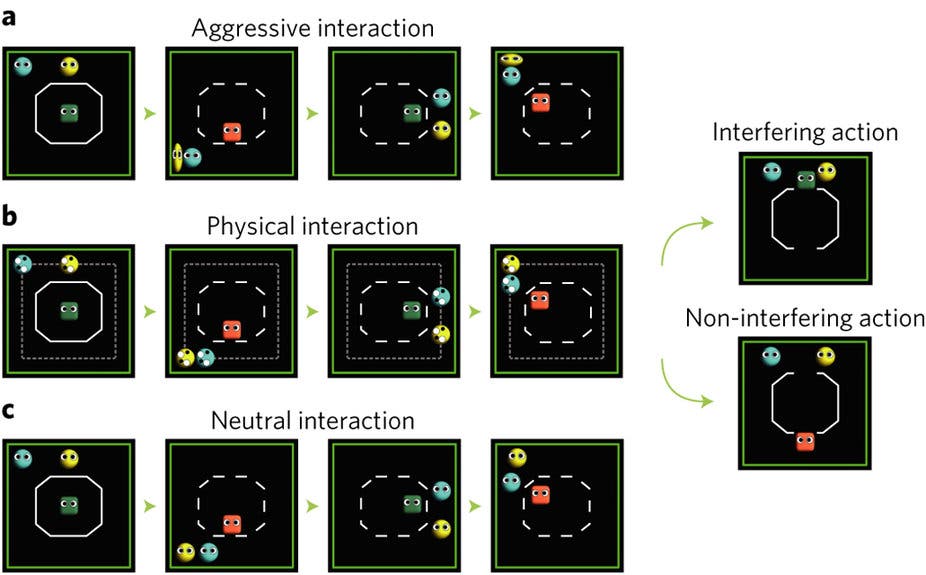Humans may have an innate feel for ‘wrong’ and ‘right,’ new research suggests. The paper describes how infants seem to recognize heroic acts even before reaching verbal ages. This might also help explain the popularity heroes enjoy in cultures throughout the world.
There’s just something about heroes that make you go all fuzzy inside, isn’t there? From the Spartans in 300 to Batman, we look up to them and root for them through impossible odds and poorly lit alleyways. If you take a moment to think about it, though, those Spartans are doing the exact thing as the Persians — murdering the other guys. Batman himself is pretty shady too, blowing stuff up, kicking people left and right, and generally filling ER rooms to the brim while racking up a huge repairs bill for the city.
So why then do we root for them? Well, there is one thing that sets them apart from the other side — both Batman and the Spartans are doing what they do to defend the weak. According to researchers from Japan, his distinction is enough to turn our brains into groupies — even before we can speak.
M-m-mo-Batman
A team comprised of researchers from the Kyoto and Tokyo Universities led by Masako Myowa found that infants as young as six months of age — under the age of verbalization — show appreciation for figures who take action to protect others.
The study included 132 infants of various age, but the most interesting findings of the study came from work performed with infants under the age of vocalization. Twenty such infants were shown a series of animations with one sphere-with-eyes chasing and then colliding with a similar sphere. A third actor, “a colored cubic geometric agent with eyes” was shown watching this interaction from a distance. The character was represented in a different color depending on what course of action it would take — one version of the animation has this third party intervene following the bump by placing itself between the spheres, and in the other, he simply leaves without taking any action to defend the victim.
After viewing the animation, the infants were given replicas of the intervening and non-intervening character to chose between. Out of the 20 six-month-old infants, 17 chose the green (interfering) cube over the orange (non-interfering) cube. The researchers controlled for differences in attention length — such as the infants looking more at the green cube than the other — and reported “no significant differences for looking time between animations either for the peripheral [or center] area of interest.”
So the babies allowed both actors the same level of scrutiny and paid both the same amount of attention, but overwhelmingly chose the interfering cube — suggesting a clear preference for this actor based on his action. Since the researchers were working with babies under the age of vocalization, there was a chance they couldn’t distinguish between an accident and a willing act of aggression. So the team performed the experiment again to see if the infants showed preference to the green cube because he merely stopped an unpleasant event, or because he was taking an active social role in protecting someone.
“It is possible that infants in our study regarded the interaction between the spherical figures in mere physical rather than socially aggressive (animate) terms, and as a result preferred the agent that stopped the negative physical event rather than the aggressive interaction per se,” the team writes.
“[So] we eliminated the perceivable ‘social animacy or agency’ of both the interacting spheres by making them appear as if they (i) had no eyes (rather than having eyes), (ii) were non-self-propelled (rather than self-propelled), and (iii) involved no distortion on contact (rather than showing distortion on contact).”
This second experiment also included 20 (new) 6-month-old infants, and they evenly selected between the two cubes — 10 picks for each of them. Just like with the first experiment, there were “no significant differences for looking times between animations.” The third experiment tested whether the infants were choosing the green cube because “he was social”, as it engaged with the spheres regardless if their interaction was negative or positive — and this wasn’t the case.
In short, it seems that there is an innate sense of justice in humans, which only grows more nuanced and complex as infants grow and understand more about justice. The team’s next goal is to track how this understanding develops over time.
“In this study, six-month-olds didn’t show a preference for intentional help over accidental help, whereas ten-month-olds did,” says Professor Myowa.
The paper “Preverbal infants affirm third-party interventions that protect victims from aggressors” has been published in the journal Nature Human Behavior.











